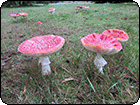More fascinating excerpts. →[More:]
From a document called
Basel II Clustering Algorithms for Portfolio Pool Aggregation:
"
Risk Segment Clustering Specifics
The portfolio risk segments, delinquency, MOB, and, where applicable, score and LTV, constitute tiers (clustering dimensions) for portfolio pool aggregation (clustering). Clustering by delinquency band provides segmentation not only for all bands less than the default, but also for each band separately. Score band clustering provides segmentation for delinquency bands 0, 1 and 2. Risk segment clustering provides segmentation at the portfolio level. Multiple report-period back tests generate the data used for clustering.
The multi-dimensional clustering procedure follows these main steps:
1. Preprocessing
- Selection of tiers (clustering dimensions)
- Definition of tier sequence (hierarchical structure)
2. Clustering process
- Determination of cluster numbers
- Assignment of stability checks and cluster cutoffs
Portfolio pool aggregation by risk segment clustering does not permit breaking the sequence of aggregated pools, so standard SAS clustering procedures are inappropriate. Standard SAS clustering also requires special procedures for determining both dimensions and hierarchical structures and uses specific segmentation criteria unsuitable for risk segment clustering."
Hey, I wrote that! And another ten pages of increasingly complicated nonsense!
By the way,
mullacc: on Friday I mentioned I worked on a Basel II score consolidator for a $30 billion portfolio(by "billion" I mean 10
9; I gather there are many places where "billion" means something else entirely). That seemed small by a factor of ten, and it was: I meant $300 billion.
It's all about "lift," my friends.
 photo by splunge
photo by splunge
 photo by TheophileEscargot
photo by TheophileEscargot
 photo by Kronos_to_Earth
photo by Kronos_to_Earth
 photo by ethylene
photo by ethylene